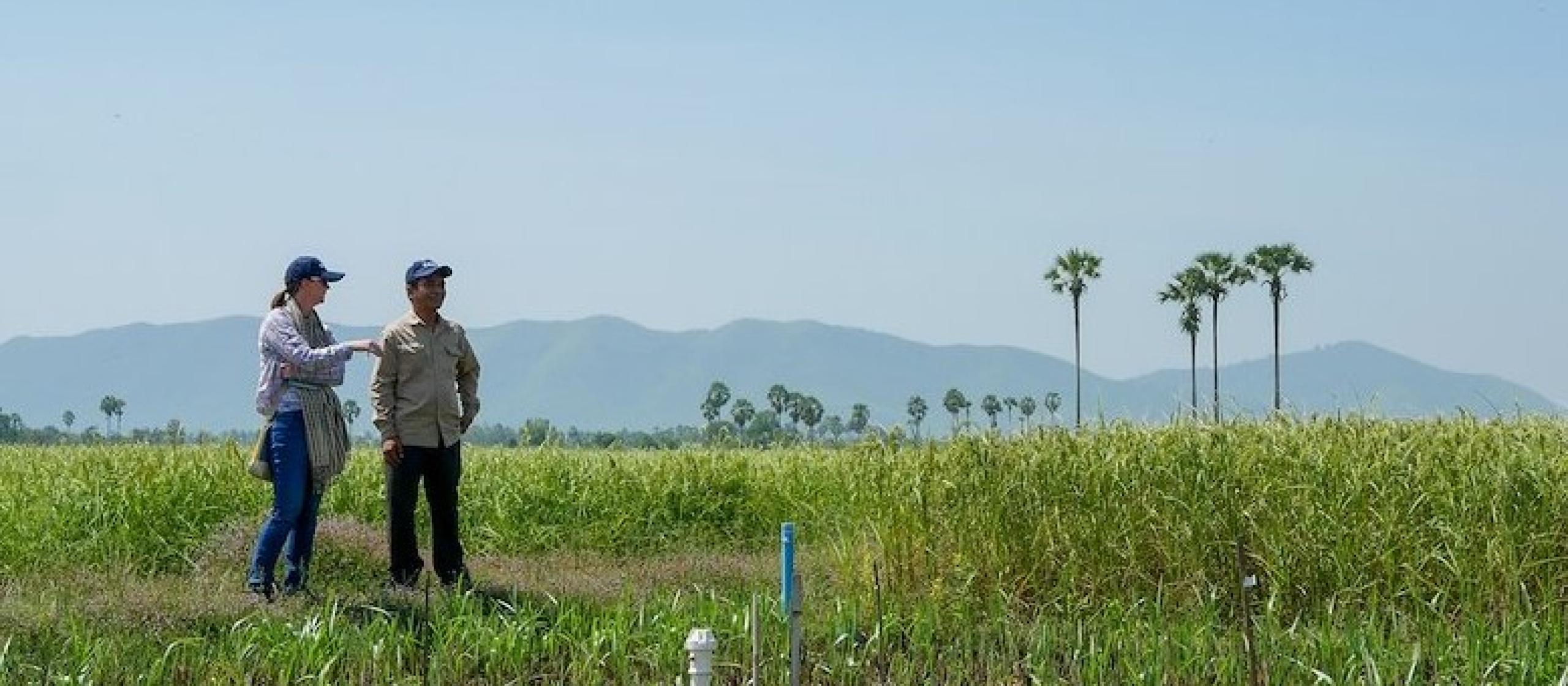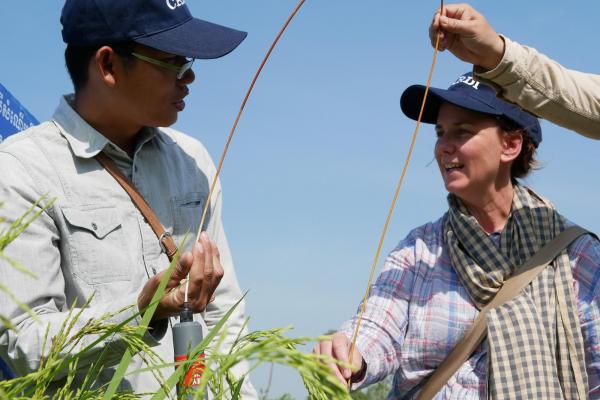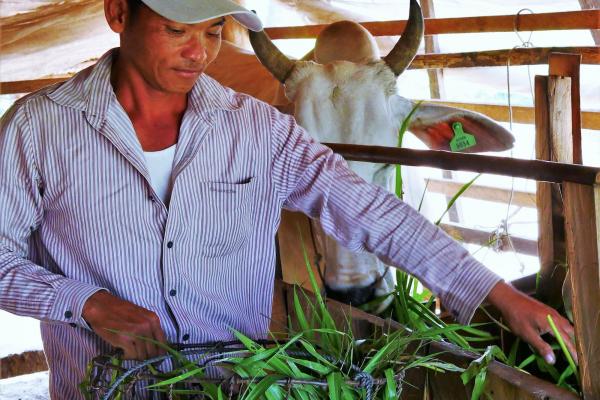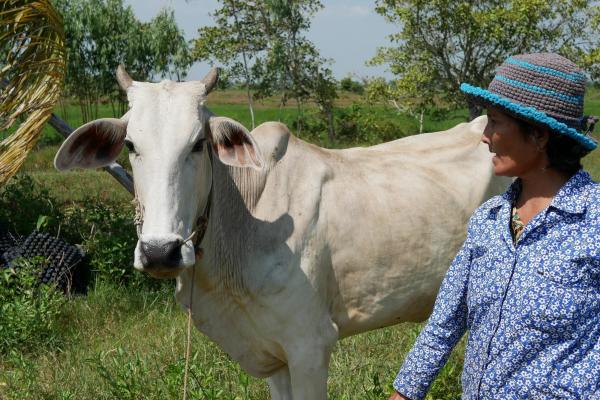- HomeHome
-
About ACIAR
- Our work
- Our people
-
Corporate information
- ACIAR Audit Committee
- Commission for International Agricultural Research
- Policy Advisory Council
- Agency reviews
- Executive remuneration disclosure
- Freedom of information (FOI)
- Gifts and benefits register
- Information publication scheme
- List of new agency files
- Contracts
- Legal services expenditure
- Privacy impact assessment register
- Commonwealth Child Safe Framework
- Benefits to Australia
- Careers
- 40 years of ACIAR
-
What we do
- Programs
- Cross-cutting areas
- Resources
- Where we work
-
Funding
- Research projects
- Fellowships
-
Scholarships
- John Allwright FellowshipScholarships to study in Australia for ACIAR partner country scientists to have Australian postgraduate qualifications
- ACIAR Pacific Agriculture Scholarships and Support and Climate Resilience Program
- Alumni Research Support Facility
- Publications
- News and Outreach
Date released
14 December 2018
How can farmers be better equipped to face long periods of drought?
Australian agronomists are trying hard to find answers to this troubling but increasingly important question.
In Cambodia, ACIAR is funding research that looks at how farmers can be better prepared to face long periods of drought – by growing the crops that are most suited for the water that is available where they farm.
More than 75 percent of Cambodia’s agricultural land is dedicated to growing rice, which demands a lot of water to grow. Many farmers grow rice solely because it is the tradition to grow rice, and not necessarily because it is the best crop to grow. In many places the soils are too sandy and the local rainfall too low to make good rice harvest yields.
An ACIAR project is examining when and where Cambodian smallholder farms should grow which crops to make the most of their lands.
“The logic is that when farmers have more knowledge on how their soils behave in terms of water, they can make better decisions about the crops they choose to grow” according to ACIAR’s Research Program Manager for Soil and Land Management Dr Rod Edis.
“For the farmers to get the most out of the land they cultivate, they need to know the nature of the soil and how much water is naturally available in it.”
One of several scientific experiments in the project is looking at exactly this. By planting forage crops on the test sites, the researchers will be able to see how well crops perform.
“We do this through two experiments; we measure the water content in the soil and we also measure the groundwater level with 35 days intervals to see how the water availability differs over time,” Dr Wendy Vance, soil researcher from Murdoch University explains.
The experiment has 12 test sites placed in farms around southern Cambodia and even though it has only been going since August 2018, the team is already seeing results.
“First of all, it is a success that all the equipment is working and that we get good quality data,” said Dr Vance. “It can be difficult to operate our test sites in a humid climate like this, because they have electronic components. Secondly, we start to see that the water content is changing over time connected to seasons and elevations. This will in the end enable us to tell how elevations, soil types and seasons are connected to how much water there is available in the soil for the farmer’s crops.”
BUILDING LOCAL KNOWLEDGE OF SOIL
Mr Phoun Phal is a rice farmer in southern Cambodia. Since August 2018, a small corner on his two-hectare land has been planted with forage to provide feed for his cattle.
“I joined the project, because in the future I want to be able to feed and produce more cows to sell. Now I have four cows and I dream of a herd of 20-30 cattle. I wanted technical knowledge on how to grow the fodder better because it is better for my cows and it saves me time as well.”
On Mr Phoun Phals’s field there is a problem though. The forage plants are in too much water and this is bad for the plants. Where rice needs to stand in water, forage plants thrive with much less.
“Here we see that there might be a too high ground water level for the forages to grow well. This land is located on one of the lower elevated sites, so maybe it is connected to that, but we have to wait and see for the result in the coming dry season to be able to tell how well Mr Phoun Phals’s land is suited for growing forages,” says Dr Vance.
Mrs Sar Samoel is another farmer in the project – she had forages planted on her fields since August this year. Contrary to Mr Phoun Phal, her forage plants are growing really well.
“We grew rice here in this field but we now have grass for the cows. The grass grows well and it is good for the cows – it has more vitamins, it fattens the cows and makes it easier for them to carry calves. Now the cows looks healthier and it also saves me time, because I have the fodder for the cows next to my home, where before I would have to take the cows out in the fields to grass,” she says.
Mrs Sar Samoel’s farm is located slightly higher than Mr Phoun Phal’s farm in an area with very sandy soil. This type of soil is typically very acid and low in plant nutrients, which makes it hard to grow rice.
“What we saw at the two sites were interesting differences,” says Robert Edis. “We clearly saw how the soils behaved differently. So by the end, we expect that both researchers and farmers have more knowledge on where in the southern Cambodian landscape it is actually better for the farmers to grow crops that requires less water than rice, such as forages.”
The work on giving farmers more knowledge about how to make the most of their farm lands continues until 2020. Wendy Vance and the rest of the project team expects to see result in the dry season starting in January, where it will start to show how well the crops perform in the different soils during drought. In the meantime, Sar Samoul’s neighbours are interested in the new technique introduced to her village by the ACIAR project.
“There are other people from the village that ask what the advantage is of growing the grass in this soil, and they ask how they can grow it. I think there will be a lot interested in this technique in the future.”
ABOUT THE PROJECT
The ACIAR-funded project helping educate farmers about their soils continues until 2020.
Besides being implemented in two Southern Cambodian provinces Takeo and Kampong Speu, the project also has test sites in Southern Laos PDR in farming communities that face the same sandy soil and water shortage challenges as farmers in Cambodia.
ACIAR partners with the University of Adelaide, Murdoch University, and the local partners Cambodian Agricultural Research and Development Institute and Royal University of Agriculture in Cambodia and National Agriculture and Forestry Research Institute in Laos PDR.






